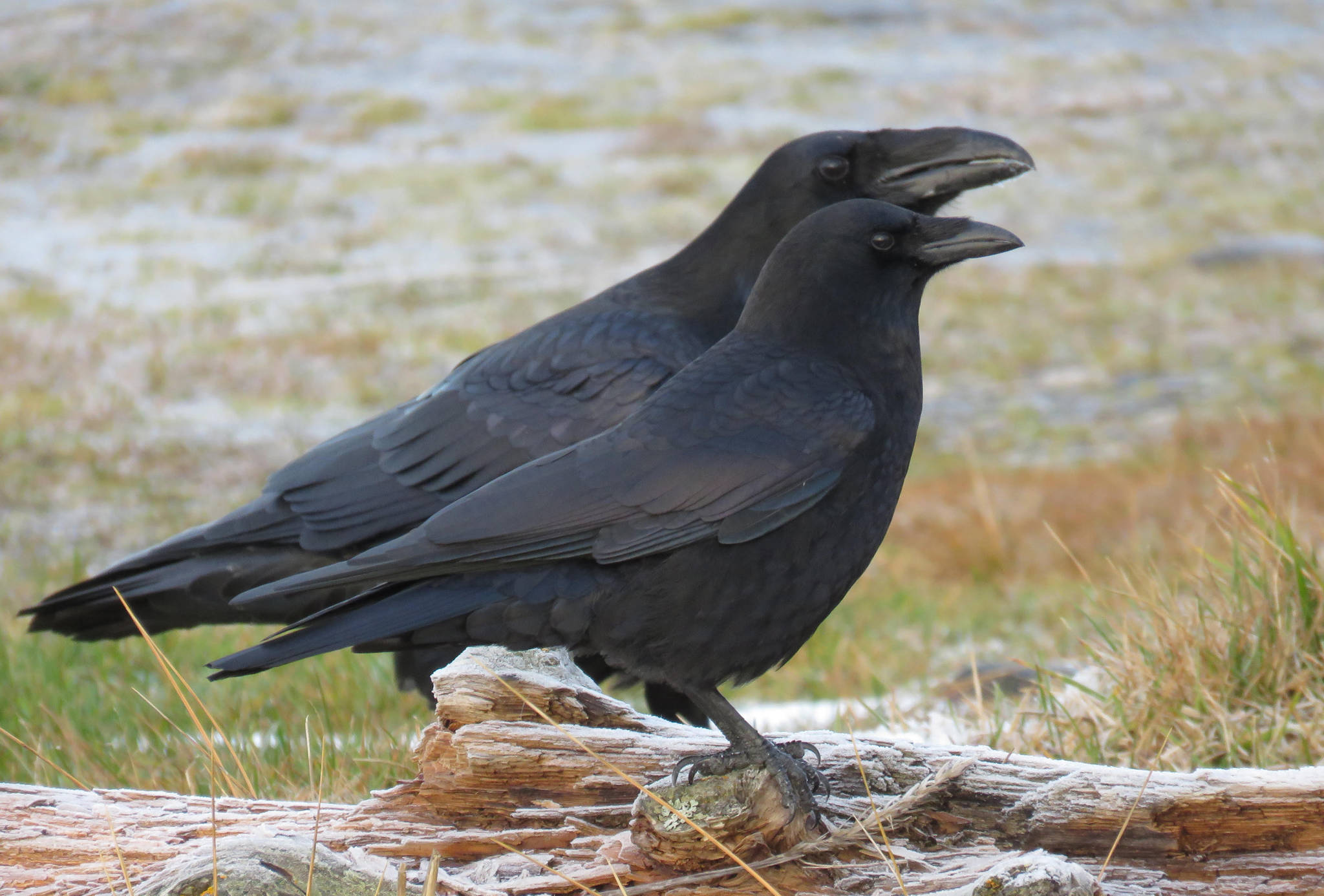Following is the first in a new monthly series of articles about birds and birding, celebrating The Year of the Bird with authors from Kachemak Bay Birders.
Corvids are members of the avian family Corvidae, which locally includes jays, magpies, ravens and crows. Worldwide there are 118 species of Corvids. In Homer, the Northwestern crow, common raven, grayjay, Steller’s jay, and nlack-billed magpie are most familiar corvid sights.
Crows and ravens make up nearly half the family, and provide fascinating reading and observation. John Marzluff, a University of Washington professor, has studied and written extensively about crows and ravens. He describes their use of tools, play, social traits and intelligence — such as facial recognition and counting. Marzluff’s book, “Gifts of the Crow,” is a gem.
Today, let’s focus on the crows and ravens. First, how can you tell the difference between a crow and a raven? The main distinguishing feature is size, with the raven being larger (24 vs. 16 inches in length, and 2.6 pounds vs. 13 ounces). The Northwestern crow is a social “city bird” adapting to urban areas, socializing in large flocks. The raven, on the other hand, is generally considered a “country bird,” and they are found mainly in pairs outside of a city. While you may see a common raven within the Homer city limits, unlike the Northwestern crow, you will not find them in large flocks hanging out at the post office.
In flight, the common raven’s tail has a much more pointed shape, whereas the Northwestern crow’s tail is more rounded. Both birds are quite vocal. In fact, the Northwestern crow is noisy with its classic caw, caw sound while the common raven has a more guttural clucking sound. Both birds have a complex, specialized, and varied repertoire of communication. Crows and ravens are good mimics, and in captivity have been trained to mimic human speech.
Stroll the streets or beaches of Homer and chances are you will see crows either in a social group or mobbing a predator such as an eagle. Want to locate an owl? Listen for crows, as they are ferocious about giving abuse to owls. They will also harass a raven to protect their nest and young.
Ravens are fanciful acrobats, as they dive, dip, chase, roll, tumble and somersault in the wind as part of a bonding ritual. Ravens appear to “surf” the wind and make us look on wistfully. We can truly ascribe the term “play” to crows and ravens as they enjoy surfing the thermal air currents. Corvids in general are often described as “mischievous” camp robbers, or mythical tricksters.
Observe the social nature of Northwestern crows the next time you enjoy a beach walk. They are adept at taking a food item like a clam and dropping it from a height to help break it open. The Corvids have the ability to use their feet to hold food items.
Crows gather or aggregate especially in the winter (non-breeding season) and also large roosting numbers are common. The largest roosting colony on record is more than 1 million crows (in Oklahoma, not Alaska). Just imagine the sight of that many crows.
The Northwestern crow hasn’t always been a familiar sight in Homer. Local resident Dave Erickson has been coordinating the Homer Christmas Bird Count (CBC) for 42 years and first reported seeing crows in small numbers in 1972. By 2007 there was a count of 1,079 crows during the CBC. That number has since dropped to 224 crows in 2017. Erickson suspects the decline is due to the loss of supplemental feeding on the Spit and the conversion of the landfill to a transfer station.
Stroll the beach to see the Northwestern crow. Hike the hills to see the common raven. If you have a bird feeder, enjoy the presence of gray jays, Black-billed magpies, and Steller’s jay. Learn more about Homer’s other corvids in “Meet the Corvids – Part 2: The Jays and Magpies.”
This article is brought to you by the Kachemak Bay Birders. For more information about Kachemak Bay Birders birding trips, meetings, and other activities and events, go to kachemakbaybirders.org.
Check out also the Bird of the Month, Citizen Science opportunities, Local Bird Information and much more.It’s a Great Day to Bird!


